Slow Cognition: The Development of "Project Engagement"

A case study of the Thematic Curation Framework
The article aims to use the Thematic Curation framework to reflect on the development of the "Project Engagement" approach.

The above diagram is the Thematic Curation framework. It was originally called the Creative Life Curation framework. You can find more details in the following articles:
- The Creative Life Curation Framework (Oct 20, 2022)
- Three Paths of Creative Life and A Semiotic System (Oct 26, 2022)
- A Semiotic System Diagram for Creative Life Curation (Nov 14, 2022)
- The Activity U Project and Creative Life Curation (Nov 16, 2022)
The Thematic Curation Framework roughly uses five movements to model a journey of a Knowledge Engagement project. These five movements form a basic model for understanding the activity of building a Knowledge Enterprise.
I also used First-wave, Second-wave, and Third-wave to describe the dynamics of the model.
First-wave Development
You can use Single-theme Development or Mulit-theme Development for discussing the first-wave development of a knowledge engagement project.
In order to understand the development of the "Project Engagement" approach, I choose the Multi-theme approach. See the diagram below.
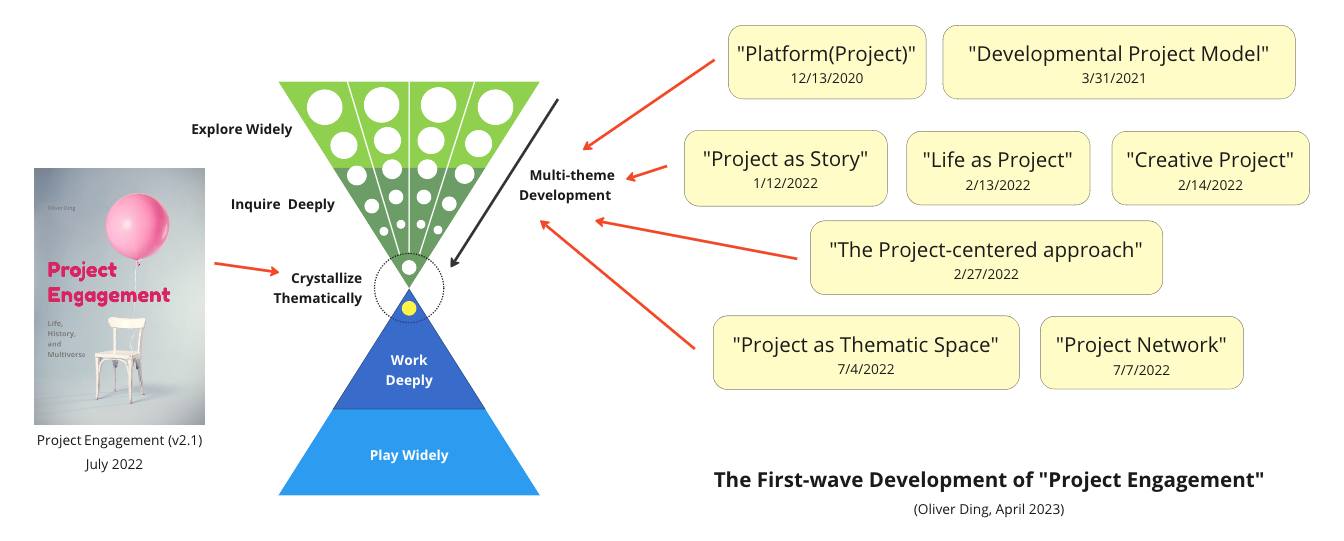
On July 30, 2022, I finished a thesis about the Project Engagement approach (v2.1). It's a 116-page file with the following three keywords: Significance, Complexity, and Genidentity.
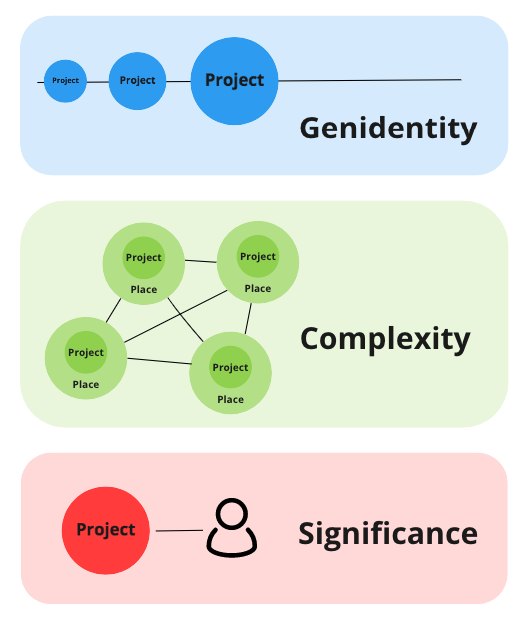
The thesis was organized into the following five parts:
- Part 1: Project, Projecting, and Activity
- Part 2: Significance
- Part 3: Complexity
- Part 4: Genidentity
- Part 5: Rethinking Activity Theory
Initially, I used the term "Project Engagement" to name the second part of my 2020/2021 book Project-oriented Activity Theory which introduces Andy Blunden's "project as a unit of analysis of activity" to Activity Theory. I summarized Andy Blunden's ideas and the historical development of Activity Theory in Part 1 (Project, Projecting, and Activity).
The Project Engagement (v1.0) introduces two frameworks and one method which are about the "Person - Project" relationship. Why does a person start or join a project? What does a project look like?
- Developmental Project Model
- Zone of Project
- Cultural Projection Analysis
From Jan 2022 to June 2022, I worked on testing Project Engagement (v1.0) and realized that I should expand it to the "Project - Project" relationship. The following six parts were introduced in Project Engagement (v2.0):
- Activity Landscape Analysis
- Project Network
- Thematic Spaces
- Mapping Project Network
- Significant Insights Analysis
- Life-History Topology
Finally, I detach the Platform Genidentity framework from the Platform Ecology project and attach it to the Project Engagement approach. The outcome is the Project Engagement (v2.1) approach which has multiple levels.
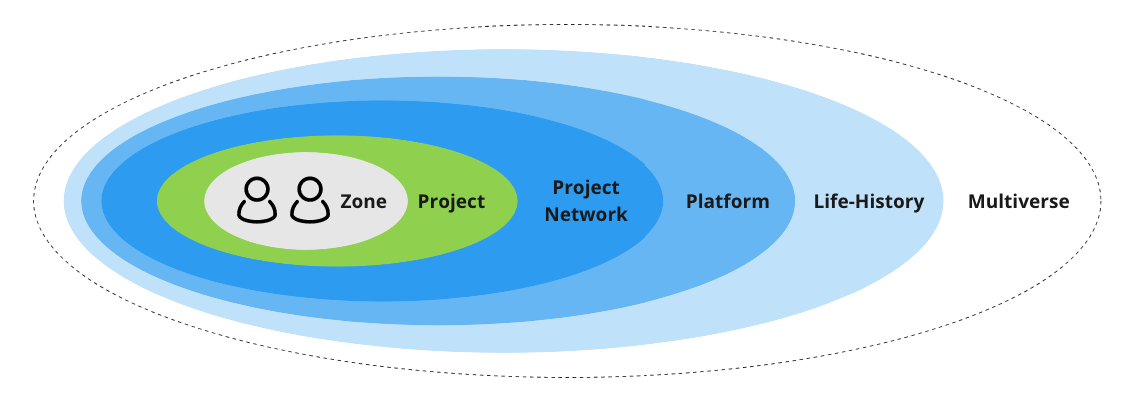
I consider the process of writing the thesis about v2.1 as the movement of Crystallize Thematically. It went beyond the original scope of v1.0.

While v2.1 uses "Project Engagement" as its primary theme, it has a new "theme network". See the table below.

The "theme network" has a meta-framework that is formed with two sets of keywords:
- Activity, Concept, Culture: this set of keywords is discovered from Andy Blunden's approach.
- Actor, Settings, Society: this set of keywords is discovered from the Project Engagement approach.
Based on the meta-framework, I selected nine theoretical concepts for the Project Engagement approach (v2.1).
You can find more details in Project Engagement (v2.1) as an Innovation Approach.
How did I reach this turning point?
What did I do from Jan 2022 to July 2022?
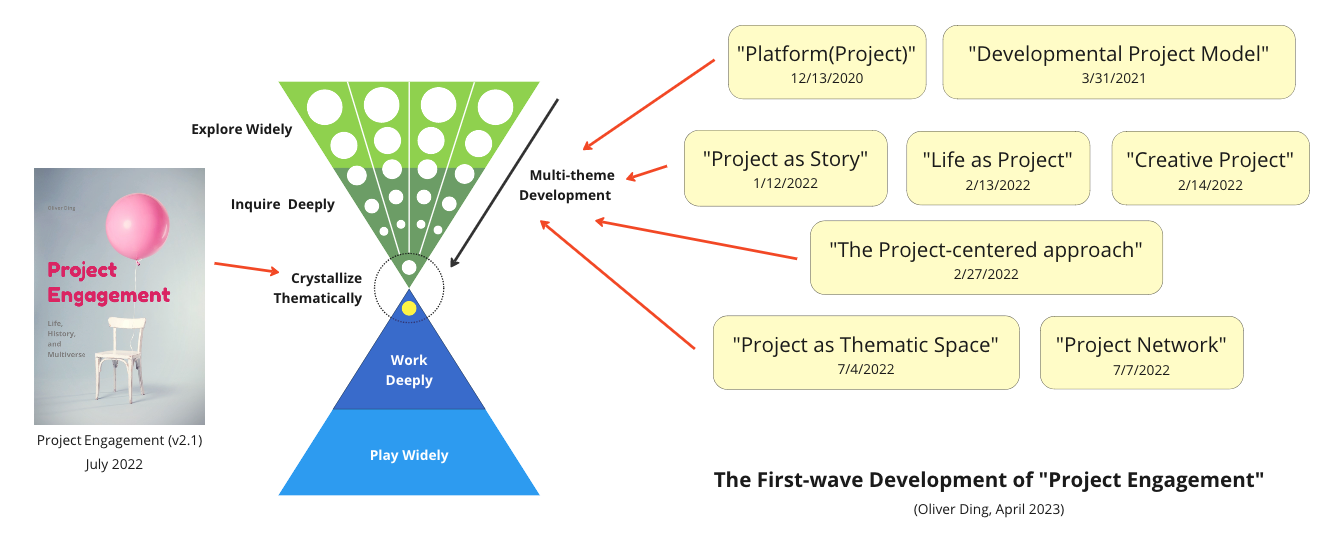
The above diagram highlights several significant themes and projects:
- "Platform (Project)" - 12/13/2020
- "Developmental Project Model" - 3/31/2021
- "Project as Story" - 1/12/2022
- "Life as Project" - 2/13/2022
- "Creative Project" - 2/14/2022
- "The Project-centered Approach" - 2/27/2022
- "Project as Thematic Space" - 7/4/2022
- "Project Network" - 7/7/2022
You can find more details about these themes from the above links. I'd like to claim that there is a significant theme called "The Project-centered Approach" which led the journey.
In Thematic Space: The Project Engagement Toolkit for Creators, I discussed my “Project” thematic space and highlighted the following three points:
- First, the Developmental Project Model is an independent framework.
- Second, there is a concept called Projectivity behind the module 4 Zone of Project and the module 5 Developmental Project Model.
- Third, I also adopted Howard E. Gruber’s Evolving Systems Approach to the study of Creative Work (1974,1989) for module 6.
Originally, the Project Engagement toolkit was born from the work of Project-oriented Activity Theory. In 2022, I applied it to the Life-as-Project project. During the process, I realized that I need to develop a Project-centered approach.

On Feb 13, 2022, I published Life Discovery: The Life-as-Project Approach and suggested a strategy for developing a Project-centered approach:
Project as A Multiple Dimension Concept
This simple strategy creates a new thematic space for creative exploration. I roughly use the Project-centered approach to name this new idea and applied them to the Life-as-Project project.
Later, I selected some ideas from the Life-as-Project project and added them to the Project Engagement approach.
Second-wave Development
The five movements form a basic model of a creative journey. However, the whole journey is not a linear narrative. There are more dynamics between these movements.
I finished the thesis about Project Engagement (v2.1) on July 30, 2022. From August 2022 to Dec 2022, I moved to work on the following projects:
- The Thematic Engagement project
- The Life Curation project
- The Life Strategy project / The Anticipatory Activity System (AAS) project
The Thematic Engagement project is a collaborative project between the Project Engagement (v2.1) approach and the Themes of Practice approach. It is a milestone in my journey of "Activity - Opportunity" Thematic Dialogue. You can find more details in The "Activity - Opportunity" Thematic Dialogue.
It can be seen as the first project of the second-wave of Project Engagement (v2.1).
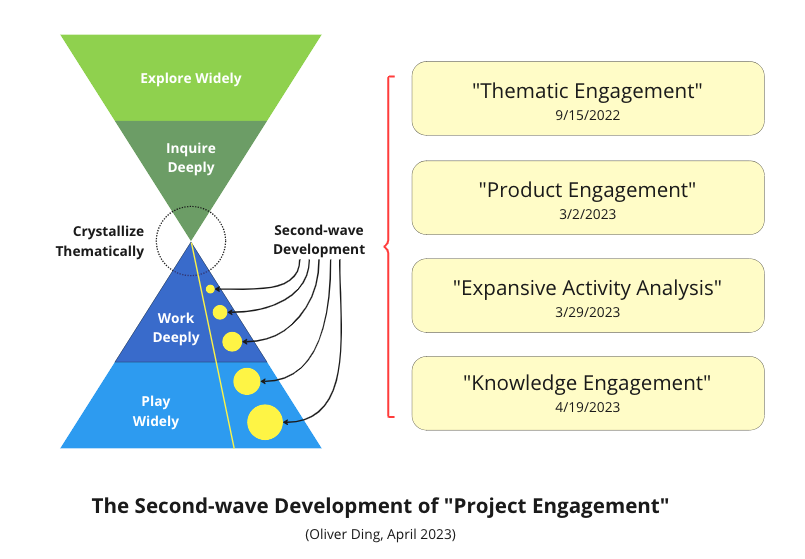
In 2023, I applied the Project Engagement (v2.1) approach to "Product Engagement" and "Knowledge Engagement". I also develop a toolkit called "Expansive Activity Analysis" for design and innovation.
This is the second-wave development of "Project Engagement".

The theme of "Product Engagement" refers to theory-based reflection on product-centered business development. I wrote 29 articles and edited a 325-page book (draft) in Feb 2023. You can find more details in TALE: Perspectives on Product Engagement (v1.0).
In the past several years, I worked on connecting THEORY and PRACTICE, especially Activity Theory/Ecological Psychology/Social Practice Theories and Design/Strategy/Innovation. The outcome of my journey is 18 possible books, a set of knowledge frameworks, and six knowledge centers.
The theme of "Knowledge Center" is part of the "Knowledge Engagement" project(1, 2, 3).

On March 22, 2023, I adopted the diagram below from the Project Engagement approach (v2.1) to represent a network of knowledge centers.
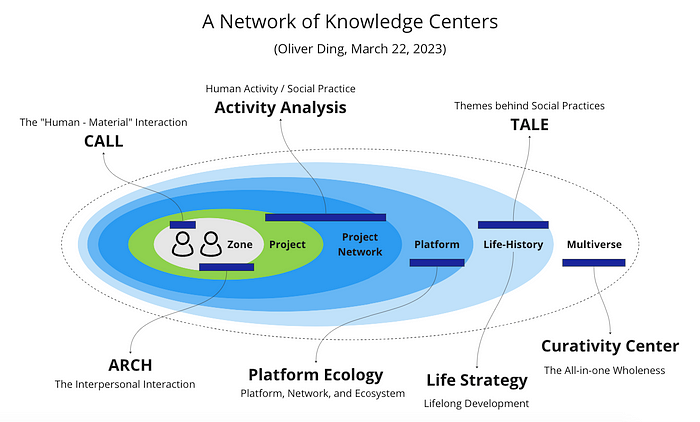
I only set up an independent website for Activity Analysis Center (https://www.activityanalysis.net/). I use Medium to host three blogs for the following knowledge centers: CALL, TALE, and Curativity Center.
It seems that ActivityAnalysis.net is only for Activity Analysis which only refers to a unit of analysis.
However, I detached my view from the concept of “Activity Analysis” and attached it to a new concept called “Expansive Activity Analysis”. See the new diagram below.

I use “Pre-Activity Analysis” and “Post-Activity Analysis” to name some units of analysis.
In addition, I name all units of analysis as a new meaningful whole: Expansive Activity Analysis. In this way, I turn several units of analysis into a meta-framework for curating knowledge frameworks. You can find more details in TALE: A Possible Theme called “Expansive Activity Analysis”.

The theme of “Expansive Activity Analysis” is a response to the challenge of curating my knowledge frameworks about activity analysis and modeling social practices.
Third-wave Development
The Thematic Curation framework can be used for Creative Life Curation. In this way, it is about reflecting on the past. However, it can be used for Strategic Thematic Exploration. In this way, it is about projecting the future.
What’s the difference between Creative Life Curation and Strategic Thematic Exploration? See the diagram below.
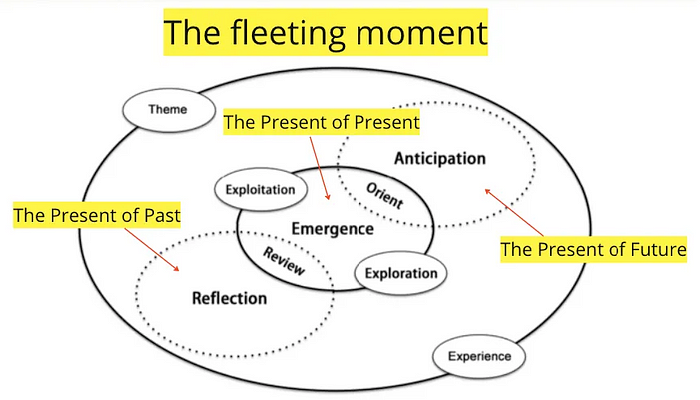
The above diagram is based on my diagram “the Path of Creative Life” and the concept of “the fleeting moment” which is adopted from Ping Keung Lui’s Theoretical Sociology. You can find more details in Three Paths of Creative Life and A Semiotic System.
In 2007, Lui published a book titled Gaze, Action, and the Social World in which he presented his account of theoretical sociology. The fundamental starting point of his approach is an Ontology of action, which was inspired by Saint Augustine (354–430), Martin Heidegger (1889–1976), and Maurice Merleau-Ponty (1908–1961). See the statement below:
The body is in action, action is in the fleeting moment, the fleeting moment is in the body.
According to Lui, “This moment is Augustinian, it comprises at the same time the Present of the Past, the Present of the Present, and the Present of the Future. The actor Remembers in the present of the past, Pays Attention in the present of the present, Expects in the present of the future.” (p.235–236, 2010, The Scientific Project of Sociology)
- Reflection: Remembers in the present of the past
- Emergence: Pays Attention in the present of the present
- Anticipation: Expects in the present of the future
“Creative Life Curation” is about the Present of the Past. It means we reflect on the past of a creative life from the present time.
“Strategic Thematic Exploration” is about the Present of the Future. While we are exploring something new in the present time, the thing is anticipated to be useful in the future or used to guide us to the future.
In other words, “Strategic Exploration” and “Creative Life Curation” have their own logic. However, we can apply them to the same present project. In both two ways, our present life themes are possible triggers for Multi-thematic Reflection.

The above diagram is called the “Strategic Thematic Exploration” Framework. You can find more details in TALE: The “Strategic Thematic Exploration” Framework.
Several days ago, I used the Thematic Curation framework to reflect on the present of the future. I realized that this is the beginning of the third-wave development of "Project Engagement".
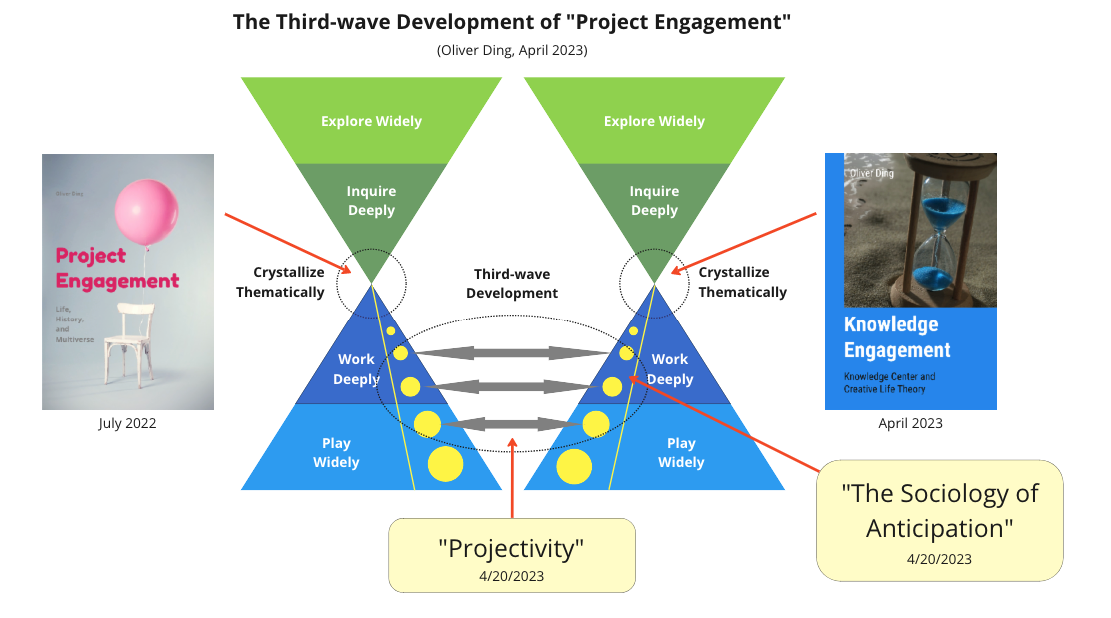
The primary theme of the third-wave development of Project Engagement is "Projectivity".
Why did I pick the concept of "Projectivity" as the focus of the present development of Project Engagement?
In the past months, I read Ping-keung Lui's book Gaze, Actions, and the Social World which introduces a brand new theoretical sociology. I also wrote notes and reflected on my frameworks. Several days ago, I designed the picture below and used it to turn my notes into a possible book. You can find more details in A New Possible Book: Knowledge Engagement.

I sent my last note to Ping-keung Lui on April 18 and I mentioned the theme of "The Sociology of Anticipation".
On April 20, 2023, I searched "The Sociology of Anticipation" on the web and found some related academic papers. I quickly realized that sociologists also use the concept of "Projecitivty".
I captured this insight as a significant insight and defined this as the beginning of the third-wave development of the Project Engagement approach.
On Jan 9, 2021, I published an article titled Activity U (X): Projecting, Projectivity, and Cultural Projection which introduces the concept of Projectivity and the notion of Cultural Projection. This article is an essential part of my 2021 book Project-oriented Activity Theory.
What’s Projectivity? It refers to potential action opportunities of forming a project or participating in a project for people to actualize their development with others.
The concept of Projectivity connects Project, Projecting, Projection together and it can be used as a foundation for Cultural Projection Analysis.
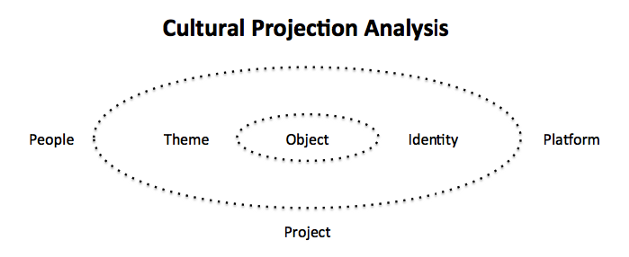
First, there is a social/cultural environment that contains Events. By perceiving and knowing Events, people recognize the Primary Projectivity which is offered by the social/cultural environments, and initiate a Project. For the Primary Projectivity, its sense-maker is Events.
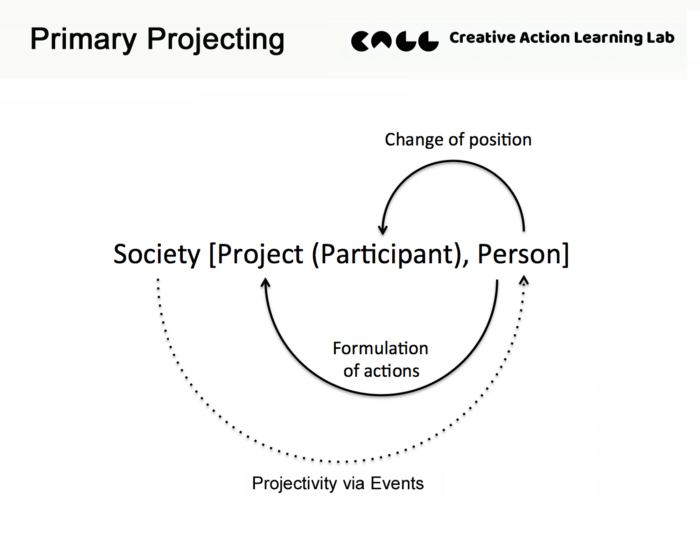
Once a project is initiated, it offers Secondary Projectivity for other people to recognize the potential action opportunities of participating in the project. For the Second Projectivity, its sense-maker is the Identity of an established Project.
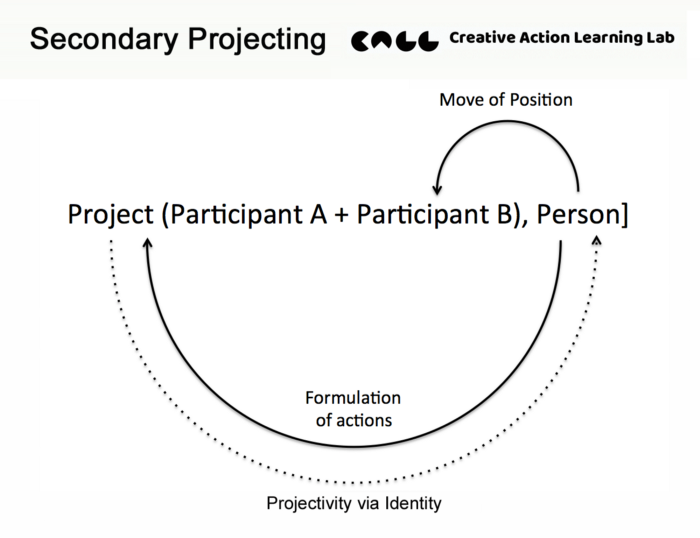
Third, the participants of a project could perceive and know the Tertiary Projectivity and initiate a new project which is inspired by the project. For Tertiary Projectivity, its sense-maker is the Themes and Identity of an established Project.

You can find more details here.
My working definition of "Projectivity" is different from sociologists' definition of "Projectivity".
Thus, the third-wave of development of Project Engagement is about a new thematic dialogue between it and the sociology of anticipation.
